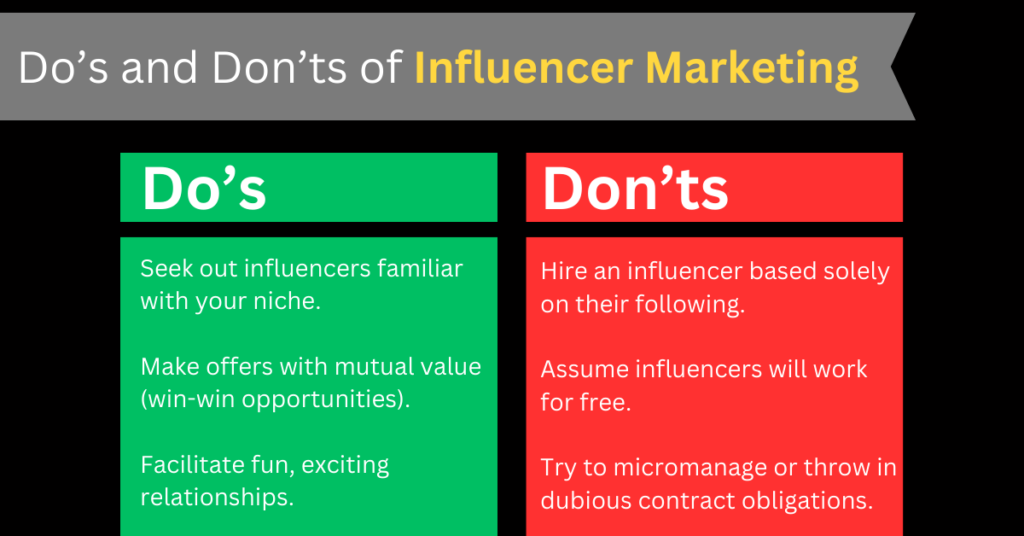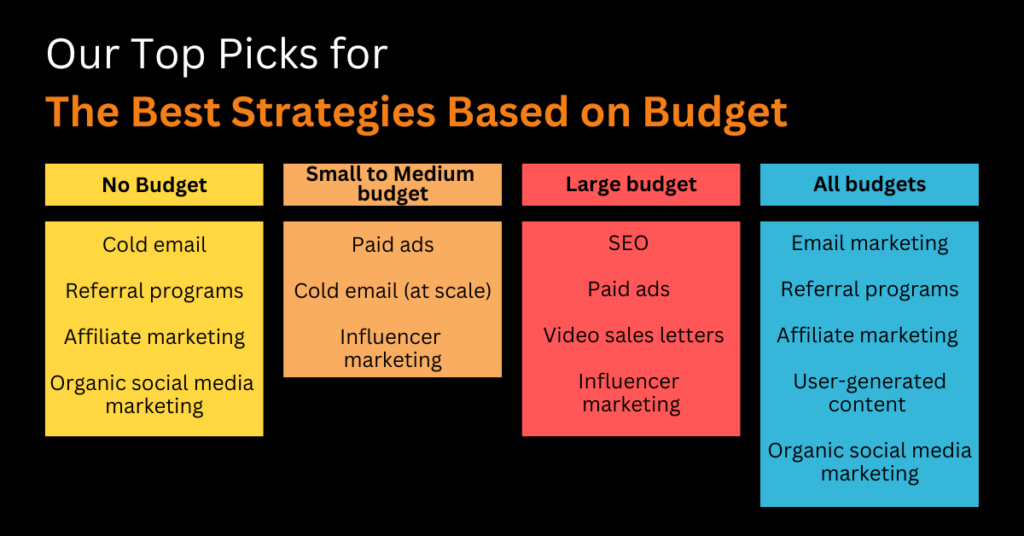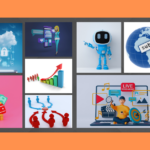This article contains affiliate links – but that doesn’t mean this piece is an ad.
All content is our honest take on the service/product and incorporates our
real thoughts and experience using it.
Whether you’re a solo entrepreneur or a small team behind a SaaS startup, effective digital marketing doesn’t require a huge budget.
With strategic planning and execution, you can build brand awareness and get customers through both inbound and outbound tactics.
This guide will walk you through the key digital marketing strategies tailored to your niche audience and goals — all based on your budget.
With the right inbound and outbound marketing mix, you can attract and convert quality leads into happy, loyal users. And with the net growth of SaaS apps being 18% year over year, you need to implement the latest SaaS digital marketing strategies now.
This guide will walk you through the key digital marketing for SaaS strategies tailored to your niche audience and goals.
Table of Contents
What is SaaS Digital Marketing?
Software-as-a-service or SaaS digital marketing is the strategies and tactics used to promote a software product/service. The goal is to build brand awareness, engage potential users, generate leads, and get long-term customers for recurring revenue through inbound and outbound marketing.
Full List of Strategies: Digital Marketing for SaaS Companies

There are two types of marketing: outbound and inbound.
Outbound is what you can do today. It’s what gets you the fastest results, with qualified leads entering your sales funnel.
Inbound marketing is a long-term strategy, gathering warm leads, introducing them into your sales funnel, and eventually turning them into buyers. Think of it like a magnet attracting customers to your products.
Outbound Strategies: Digital Marketing for SaaS Companies:
- Cold email (no budget required)
- Affiliate marketing (no budget required)
- Partner programs (small budget required)
- Paid advertising (fits all budget sizes)
Inbound Strategies: Digital Marketing for SaaS Companies:
- Organic social media marketing (no budget required)
- Referral programs (no budget required)
- Email marketing (small budget required)
- User-generated content (small budget required)
- Influencer marketing (small budget required)
- Video Sales Letters (medium budget required)
- Search engine optimization (large budget required)
SaaS in Digital Marketing Terminology Explained
While you don’t need to be a marketer with 10+ years of experience running ads or an agency, you do need to understand a few key terms.
And if you’re completely new to marketing, it’s essential to keep a few principles in mind.
Ultimately, the goal of marketing is to make a sale. That’s it.
But 98% of customers don’t make a purchase the first time they visit your website, which is roughly a 2% conversion rate.
This means there must be more to SaaS digital marketing than making a sale. While the sale is the end goal, you need to have other mini-goals within your marketing strategies, which is where SaaS digital marketing terminology comes into play.
You want people to familiarize themselves with your brand. Get accustomed to reading your blogs or seeing your social media ads. And if your SaaS solves a painful problem or saves them time, they’re bound to buy.
Think about it like this:
Your software solves a problem. And your customer may or may not know that your solution is available (and in some cases, that the problem exists, if you save them time).
Marketing is the bridge, connecting your solution to customers’ problems.
Through data analysis and a keen understanding of your ideal buyer, you can bring anyone from point A in your sales funnel to regular monthly customers.
Sales Funnel Basics

Understanding and optimizing your sales funnel is like casting a wider fishing net to catch more fish. The wider mouth of the net represents top-of-funnel strategies like content and social media marketing to drive broad awareness among potential customers.
As you reel them in, the funnel narrows through middle stages like email lists and demos. So you need to eliminate leaks in the net to maximize conversions.
Let’s look at an example.
Say you get 10,000 visitors monthly to come to your site, but only 1,000 opt-in to your email list. You may want to look for ways to boost that conversion rate. For instance, strengthen your lead magnet offer or make the CTA more prominent (parts of your sales funnel).
Essentially, you can break down each part of your funnel:
- Widest: Blog posts, social media content, outbound marketing
- Wide: Lead magnets, email list signups
- Middle: Email nurturing sequences, content offers, demos
- Narrow: Free trials, product demos, pricing page
- Narrowest: Paid subscribers
By outlining and understanding each stage of your sales funnel, you can identify weak points and leaks. Then optimize each step, starting from the bottom with a reduced churn rate.
You want to start from the bottom because this is what allows you to scale. With a product that customers love and never want to unsubscribe, you can continue scaling profitably, dumping money into marketing like a money printer.
But if you have high churn, your widest part of the sales funnel goes to waste — you lose so many customers on the way down and at the bottom that you can’t operate profitably.
As you’re building your digital marketing for SaaS companies’ strategies, keep the sales funnel in mind.
Key Metrics to Understand
To determine the success and profitability of your SaaS marketing, you need to track key metrics. By understanding these numbers, you can gauge campaign performance, growth potential, and overall business health.
Some of the most important metrics include:
Monthly Recurring Revenue (MRR) – This is the predictable income you can expect each month from subscriber payments. Higher MRR allows better cash flow forecasts.
Customer Acquisition Cost (CAC) – The total cost to get a new customer across marketing channels. Lower CAC means cheaper growth.
Lifetime Value (LTV) – The revenue a single customer will generate over their lifetime. LTV should exceed CAC for profitability.
Ramen Profitability – When the profits of the SaaS solution are enough to pay the founder’s living expenses.
Annual Recurring Revenue (ARR) – Total expected yearly revenue from existing subscribers. Helps value SaaS businesses.
Conversion Rate (CVR) – The percentage of customers who visit the website and buy, typically limited to specific sales pages or sales offers from email or landing pages.
By tracking these metrics, you can optimize your digital marketing SaaS ROI, reduce subscriber churn, forecast revenue, and show business value. The numbers don’t lie — leverage them.
When tracking, your goal should be to change one variable and observe what happens. For instance, let’s say you’re starting a new cold email campaign. You’ll have metrics like open rates, click-through rates, and conversion rates — which we’ll discuss later.
But overall, you must focus on the above key performance indicators (KPIs). Some questions to ask include:
- How much did our MRR increase/decrease because of this campaign?
- Did this campaign increase/decrease our LTV?
- How can we improve our CVR for this campaign?
- How can we optimize our CAC for this campaign?
But for SaaS digital marketing, none of these metrics come close (in importance) to retention metrics.
Terms for Customer Retention (Extremely Important)
A common SaaS pitfall is focusing too heavily on customer acquisition while neglecting retention — especially when it costs 5x more to acquire than to retain. But think of your subscriber base like a leaky bucket. The churn rate measures the percentage of customers you’re losing in a given timeframe.
Even small improvements in plugging those leaks can have an outsized impact on revenue and margins.
For example, if a SaaS has $100,000 in monthly recurring revenue and a 5% monthly churn rate, they are losing $5,000 per month or $60,000 per year in revenue. Reducing churn by just 5% to 4.5%, monthly revenue loss drops to $4,500.
That translates into $15,000 in saved revenue per year and a 25% increase in profit margins.
So how do you increase retention and decrease churn rates?
One way is by upselling current subscribers to higher-priced plans and cross-selling complementary tools. These proven tactics will increase LTV and reduce churn.
Additionally, hand-holding customers with white glove onboarding, ongoing education, and stellar support via customer success teams. These proven strategies boost loyalty and retention over self-serve users.
However, the only way to get customers is through marketing channels.
Marketing Channels and Their Importance
Different channels allow you to reach and attract different types of prospective customers.
SEO helps you get found by people already searching for related keywords. Social media builds awareness among demographics active on various platforms. Email marketing nurtures leads already familiar with your brand.
Outbound channels like content syndication and direct mail/calls can penetrate untapped markets by pushing your messaging and offers directly to targeted prospects.
Consider your ideal customer avatar, funnel needs, budgets, and in-house expertise when allocating SaaS digital marketing resources. Track performance diligently across every channel and double down on what delivers results.
A balanced marketing mix utilizing both inbound and outbound tactics will help you attract and convert new customers at the top of the funnel. And at the bottom of your funnel, optimizing your backend will fix your leaky bucket of churning subscribers.
Understanding Your Ideal Buyer
You should tailor your messaging and campaigns to resonate with this core demographic of your “ideal buyer.”
For example, say you have a cold email automation tool. Your ideal customers are likely digital marketing agencies, freelancers, and entrepreneurs actively promoting their businesses on platforms like LinkedIn and Twitter.
With this buyer persona in mind, creating a targeted video sales letter explaining the exact benefits of your software for agencies could be highly effective.
Promoting that VSL through email marketing to qualified leads could generate conversions.
Running contests and giveaways on Twitter is a free way to build awareness among microbusiness owners.
The point is to intimately understand details about your ideal customers like demographics, pain points, and motivations. This allows you to craft marketing that speaks directly to their desires and grabs their attention.
Start by analyzing the core problem your SaaS solves. Ask yourself:
- Who suffers most from this problem? What types of personas experience the most pain?
- What workflows or tasks does my software optimize for target customers?
- How are prospective customers currently solving this problem without my product? What frustrations do they experience?
- What are the main drivers and motivations that would compel targets to buy my SaaS? Am I framing my messaging around those desires?
- What messaging best resonates with my target audience? What language and tone do they respond to?
By researching your ideal purchasers and segmenting them into buyer personas, you can tailor every marketing campaign to maximum effect.
Always view your funnels through the lens of your ideal customer. Let this guide your strategies and copy.
Hyper-targeted SaaS marketing yields the best ROI.
SaaS Marketing Plan Examples (And How to Execute)
Marketing isn’t always easy. But we’ll try to make it seem that way. Here’s how to execute every digital marketing strategy for SaaS companies.
Cold Email Marketing
Cold email is the most effective, fastest, and lowest-budget way to get SaaS customers. If you can scrape leads from highly-targeted sources, and craft a compelling script and follow-up sequence, you can get hundreds of paying customers within days.
Here’s how:
First, craft compelling subject lines that grab attention while being transparent about your outreach. Research ideas and use tools like Subject Line Analyzer. You can personalize each pitch to the receiver, or do a broad, at-scale targeting campaign using an AI tool.
Ideally, focus your emails on how you can help make their lives easier, not on product features. Tell a story and make it conversational.
Building customized prospect lists takes work but ensures quality outreach. Identify target company attributes like industry, size, and tech stack. Verify emails to guarantee delivery.
Tools like Instantly, Lemlist, and Mailshake help track opens, clicks, and replies at scale. Analyze response metrics to refine your approach. Follow up, but avoid harassing unresponsive prospects.
Here’s an example of a cold email and follow-up that’s automated yet personalized:

Cold email is all about volume and testing. Once you have a winning campaign, you can scale accordingly and get countless customers.
Affiliate Marketing
Affiliate marketing should be a key channel in your SaaS customer acquisition stack. Start by identifying affiliates who engage your ideal B2B SaaS users, like SaaS review sites/blogs, business and tech influencers, and industry publications.
Great places to find potential partners are affiliate networks like ShareASale, ClickBank, and AffiliateWP which have thousands of affiliates across niches. The key is to offer generous commissions, around 20-30%, to incentivize affiliates appropriately.

You can also provide assets to make promoting your SaaS easy like pre-written emails, custom signup flows, unique tracking links, banner ads, and text/video/graphic content.
Use affiliate management software like Post Affiliate Pro to track key metrics like new leads, signups, revenues, and commissions generated per affiliate. Optimize by increasing promos from your top performers. Then, you’ll have to pay out your affiliates each week.
Analyze channel ROI by comparing revenues driven vs costs of commissions paid out. Test raising commission rates further for stellar affiliates if ROI is strong. If done properly, affiliate marketing can become a predictable driver of highly qualified leads.
Partner Programs
Forming strategic partnerships with other software companies allows SaaS companies to tap into new customer bases efficiently. Potential partners may include firms servicing your ideal clients but not directly competing.
For example, partnering with a sales CRM to create an integrated offering makes sense. Providing demo access, co-branded content, and promo discounts to each other’s email lists and channels can expand reach.
Partnership marketing provides built-in exposure to qualified, warm leads. However, it’s crucial to structure agreements detailing how leads, data, and revenue will be shared between partners transparently.
The key is identifying synergistic partnerships that allow you to access whole new segments of qualified leads in a scalable, cost-efficient way. With the right partners, this strategy can significantly expand marketing and distribution.
Paid Ads

Paid ads, or pay-per-click advertising (PPC ads), allow SaaS companies to get their product in front of targeted audiences on platforms like Facebook, LinkedIn, Google, and more. They can be a fast way to drive conversions but require diligent optimization.
The first step is defining campaign objectives whether that’s clicks, conversions, catalog sales, etc. Targeting your ads to specific ideal customer demographics and lookalike audiences is also something to keep in mind.
When just starting out, focus on driving traffic to your site or product demos. Lead generation campaigns can work too (e.g., to a lead magnet prompting an email sign-up). Always A/B test ad variations including imagery, headlines, text, captions, and call-to-actions.
Work across multiple ad formats like display ads, video ads, native ads, and social media ads. Leverage placement targeting where possible — advertise directly on relevant blogs, forums, influencer content, etc.
This is the basic strategy for paid ads, regardless of platform:
- Start with small daily budgets while testing.
- Gradually increase budgets for winning ads while eliminating underperformers.
- Use cost caps per conversion or action to manage ROI.
Retargeting engaged visitors with discounts or specific SaaS product pitches converts abandoners into customers. Create custom audiences for this purpose.
Key metrics to track include cost per click, click-through rate, conversions, cost per conversion, and ROAS. Continually optimize towards your targets.
Paid ads require diligent daily management, testing, analysis, and refinement. But with a methodical approach, they can deliver predictable lead growth and scale efficiently.
Organic Social Media Marketing
Organic social promotion leverages owned platforms to engage prospects without a paid media budget. Tailoring content and messaging specifically for each platform’s audience is key for traction.
For instance, a video on TikTok isn’t likely to go viral on LinkedIn — the audiences are totally different. But, both platforms can work for your SaaS. It just depends on your product.
Posting valuable insights, behind-the-scenes, Q&As and more can spark engagement and sharing. Responding to comments and questions also enhances community interaction.
Contests, user-generated content campaigns, relevant hashtags, and tagging influencers help expand reach organically. Partnering with aligned creators provides access to new audiences, as we’ll cover in influencer marketing.
Your goal in social media marketing is to gather attention. You don’t need to even mention your software in your content. Just put your link in your bio to a targeted landing page, and people will click.
Once you’ve found angles that work, double down, and produce more content that goes viral.
Email Marketing
Email marketing is vastly different from cold emailing — you’re nurturing people who have opted into your list, rather than promoting your product without their permission.
So what does that mean?
Email marketing is where you can build trust and value while simultaneously hard selling your product. It’s where you explain and explore the pain points your target market faces, and sell your product as the solution.
Typically, you get email subscribers by offering them something (a lead magnet) in exchange for their signup. For instance, if your software is a cold emailing software, it could be a seven-page guide on cold emailing with scripts.
Once people sign up, you’re going to need to set up an autoresponder — a set of three to ten or more emails (a sequence) that warms up the audience into purchasing. Here’s an example of a five-email autoresponder:
Email #1: Welcome email with lead magnet download
Email #2: Pain point identification and acknowledgment
Email #3: Content upgrading lead magnet with more advanced marketing tactics
Email #4: Demo offer to experience product solution
Email #5: Limited-time discount offer for first purchase

This type of sequenced storytelling and value-building converts subscribers into buyers over time. Just be sure to track metrics like open rate, click rate, and unsubscribes to optimize your efforts.
While an autoresponder isn’t required, you should be doing email marketing regardless of budget. It’s a great way to reduce churn rates and increase LTV.
User-Generated Content
Encouraging your users to share their genuine experiences is powerful social proof. Run creative campaigns asking for video testimonials, reviews, use cases, and product feedback.
To get participation, you need to make it fun and offer incentives like discounts or prizes. Repurpose top UGC across your platforms — emails, social media, and case studies on your blog.
Just be sure to get proper consent before promoting user content externally. See what performs best when promoted to drive conversions and optimize your outreach.
Referral Programs
Word-of-mouth referrals from passionate users can speed up customer acquisition. Set up a great referral program that rewards successful referrals with account credits, discounts, or other perks.
Promote it everywhere — in your product, post-purchase emails, social channels, etc. And make sharing and tracking referrals easy with self-service referral pages.
Integrate your referral program with your CRM to attribute new leads and sales to referrers. Analyze the referral conversion rate and revenue per referred customer.
Double down on what’s working — improve the referral UX or increase the perks. Satisfied customers can become your best brand advocates.
Influencer Marketing

Partnering with influencers who have engaged audiences can be a cost-efficient way to drive SaaS growth. Start by vetting potentials based on audience fit, reach, engagement metrics, and past campaign performance.
Micro or nano-influencers in the 10k-100k follower range often drive better engagement and conversions versus celebrities. Look for influencers actively creating content around topics related to your SaaS niche.
Start with one-off content collaborations by providing assets like sample products, brand guidelines, and approved messaging to make partnerships easy. Sponsored posts typically cost anywhere from $100-$500+ depending on follower count.
While finding the right influencer can be tough, the trust they’ve built with their audience is invaluable — and it can lead to hundreds of leads in an extremely short period of time.
Video Sales Letters
Video sales letters (VSLs) use storytelling and demo visuals to showcase how your SaaS solves customer pain points. A compelling VSL can dramatically improve conversion rates.
Invest in working with a professional copywriter and video team to produce high-quality VSLs, or use a turnkey service. If you write it yourself, you’ll want to focus the script on resonating with customer struggles and clearly explaining your solution.
Keep videos concise at 3-5 minutes. Use graphics, on-screen text, product walkthroughs, and testimonials to bring the product benefits to life.
Promote your VSL through paid ads, email marketing, and social media. Test different hooks and edits for each channel. A strong VSL can become the backbone of a conversion-focused marketing campaign.
Continually track performance metrics like views, completion rate, CTRs, and conversions to optimize. Change up messaging, positioning, etc. VSLs take work but the impact can be 1000x worth the investment. You pay once, and it plays forever.
Search Engine Optimization (SEO)

SEO starts with keyword research. And when you have a fresh website, you can’t compete for high-traffic keywords — you need authority first.
To build authority, you should begin your keyword research by targeting low-volume, long-tail keywords. These are searches such as:
- “best Shopify email marketing apps”
- “how to do cold email outreach”
- “beginner guide to social media automation”
Rather than just “email marketing” — which has immense competition — long-tail keywords are more niche, but easier to rank for when starting out.
1. Keyword Research
Using keyword research tools like Ahrefs or LowFruits will help you identify these long-tail keywords.
Once you’ve found some keywords, it’s time to analyze the content that’s currently ranking high.
Your content needs to be better, so look for content gaps. What can you cover that they didn’t?
That’s the kind of content Google wants to test and see if it performs better than the current blog posts.
For example, if your SaaS is for cold email outreach, research terms like “cold email templates for startups” and “beginner guide to cold email sequences”.
2. Research Competitors and Create Better Articles
Study the top-ranking articles and identify what extra templates, sequences, or strategies you can provide to beat that content.
In your posts, focus on expert advice, actionable tips, and solving reader problems within your niche. Include specific examples and case studies. Promote your content through social media, email lists, guest posting, and outreach to build initial awareness and backlinks.
3. Get Backlinks and Optimize Technical SEO
You’ll also want to include the primary keywords you’re targeting in headers, title tags, meta descriptions, and alt text. And if your website isn’t fast enough, you’ll want to find ways to make it faster.
With a robust content marketing strategy (SEO), the goal is to create shareable, enjoyable content. That’s how you’ll build authority and get backlinks (a crucial part of building authority in Google’s eyes).
Over time, consistency is what will get you results. Posting once per week over the course of a year will get you exponentially better results than posting once per month.
How and When to Adjust Your SaaS Digital Marketing Strategies
It’s critical to continuously track campaign performance and be ready to optimize and pivot when needed. Common SaaS digital marketing pitfalls include improper targeting, weak messaging, poor ROI, and lack of iteration.
Why Aren’t Your Campaigns Working?
Carefully identify underperforming campaigns by setting and tracking clear KPIs.
Are open rates low? Conversion rates dropping? Cost per lead too high?
Dig into metrics like CTRs, CPL, ROI, conversions, churn, etc to surface issues.
Analyze the root causes of underperformance based on data insights.
Are you targeting the wrong buyers? Is creative or copy misaligned? Is the channel improper for your goals?
Isolate what needs improvement. And test some more.
Pivoting Your Marketing Efforts
Signs you need to change course include missed targets, plateauing growth, and campaigns delivering diminishing returns. Don’t throw good money after bad.
When pivoting, run controlled tests changing one variable at a time. Shift budgets to better-performing efforts. Refine targeting, messaging, and offers based on learnings before fully relaunching.
Additionally, regular check-ins on metrics and performance establish a feedback loop to drive ongoing optimization. Track benchmark KPIs daily, weekly, and monthly.
Leverage project management and marketing analytics software to track campaign health. Be ready to adjust quickly — the best marketing strategies evolve.
Our Top Picks for the Best SaaS Digital Marketing Strategies Based on Budget

No-budget: Cold email, referral programs, affiliate marketing, organic social media marketing
Small to medium budget: Paid ads, cold email (at scale), influencer marketing
Large budget: SEO, paid ads, video sales letters, influencer marketing
All budgets: Email marketing, referral programs, affiliate marketing, user-generated content, organic social media marketing
Now that we’ve covered all the digital marketing for SaaS companies’ strategies, you have an in-depth playbook for attracting and converting SaaS customers across channels. It’s time to take action by implementing an effective digital marketing SaaS strategy.
When it comes to SaaS in digital marketing, you need to assess your product stage, target customers, resources, and skill sets. Then, build a balanced SaaS digital marketing mix leveraging the highest ROI strategies covered above to grow efficiently.





The section on email marketing best practices is helpful and informative.
We are glad you found this article helpful!
This guide is comprehensive and really touches on some important points when doing B2C marketing.
Glad to hear you found this blog post useful!